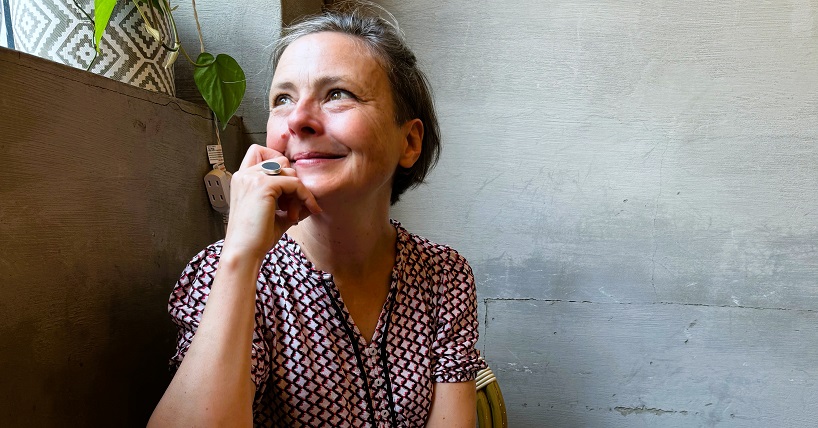Newcastle gaol
The grisly history of Newcastle gaol
Published on: 7 June 2022
The fascinating stories behind Newcastle’s Victorian prison are being brought together for the first time thanks to research led by a Newcastle University academic.
Bygone piece of city's history
A new exhibition at City Library, Newcastle, will reveal the grisly details of the conditions inmates were kept in, the crimes they were being punished for and what everyday life was like inside the gaol which was located at Carliol Square.
It also contains archive photos of many of those who were detained, alongside a whip used to punish offenders and a book containing the skin of a man executed in Newcastle in 1850.
“The Life and Death of Newcastle Gaol, 1822-2022” is based on research carried out by Dr Shane McCorristine, from Newcastle University, Dr Helen Rutherford and Dr Clare Sandford-Couch, from Northumbria University, and Dr Patrick Low, a graduate of Sunderland University. The exhibition will also feature photography by local artist and Newcastle University graduate Lorna MacKay.
The exhibition is the next phase in a long-term project to gather research, ideas, memories, images and other content that can help tell stories about the gaol and, more broadly, the East Pilgrim Street area and its history. As part of the project, the researchers also reached out to the public to gather any memories or information about the prison and visitors to the exhibition can see these.
Many of the same discussions about regeneration and urban reform that were occurring in 1822, when the gaol was being planned, have been echoed recently as bulldozers pulled down the Dex Garage, Worswick Street Bus Station, and Commercial Union House to redevelop the area.
Dr McCorristine said: “The story of the gaol and those who were imprisoned there in many ways reflects the changing story of Newcastle. The area between Manors and Pilgrim Street, where Carliol Square is, was once the main route between the city and the quayside, but soon after the gaol was demolished in 1925, the whole area began to be transformed. There are few signs of the gaol’s existence visible today, so the exhibition provides a way for people to remember a bygone piece of the city’s history.
“We had a great response to our request for the public’s help, with people sending us a range of stories about the prison and those who worked there or were detained there – including some rare letters written by some of the prisoners themselves, which give a great insight to their thoughts and feelings about being in gaol.”

Rare items and daring escapes
The exhibition will also include rare items loaned from Tyne & Wear Archives & Museums, including a bale of oakum, handcuffs, and the original key to the prison.
Also revealed are stories of some of the daring escapes made by prisoners, including 27 year old Mary O’Neil, who had been arrested in 1870 for stealing a purse on Clayton Street. Within a few weeks of starting her sentence, she had managed to remove the iron bars from the window in her cell and climb up on to the roof before disappearing over the imposing, 25 foot high boundary walls. She evaded capture for six months before being caught in Liverpool when a policeman recognised her from a photograph.
Among the other stories included in the exhibition are those about a group of 12 suffragists who were serving sentences of up to a month for their role in what was to become known as the ‘Battle of Newcastle’. The ‘battle’ was a series of protests to coincide with the visit of the Chancellor, David Lloyd George, to the Palace Theatre in Haymarket, Newcastle, in October 1909.
Their imprisonment attracted much public support, and crowds gathered outside the gaol to sing and shout their encouragement. One of the women imprisoned was Kitty Marion, a former actress and music hall star. As soon as she was led into her cell, Kitty barricaded herself in with the bedstead and refused to let any of the guards in. She later found a way to set fire to her bedding, causing pandemonium throughout the prison. She also immediately began a hunger strike, and in letters she sent to The Times, described the horrors of being force-fed during her month-long sentence.
The exhibition will also cover the double execution in November 1919 of Ambrose Quinn and Ernest Bernard Scott - the last ever to take place in Newcastle. Scott and Quinn were both 28 years old at the time and both had murdered women, in Scott’s case an unrequited love named Rebecca Jane Quinn and in Quinn’s case his wife, Elizabeth Ann Quinn (the victims coincidentally shared a surname). The local press detailed Scott’s unshakeable and seemingly unmoved expression until his execution, with newspaper reports reporting that he ‘spent his time singing, whistling and humming hymn tunes’. However, Quinn was weeping in the cell next door.
The gaol was designed by John Dobson and replaced Newgate, Newcastle’s medieval prison. Opened in 1828, it was among the first prisons to use a radial ‘panopticon’-style system, seen as a modern and progressive design that would help reform rather than punish offenders.
However, only five of the six radial wings were ever built due to high construction costs, and the number of inmates quickly increased due to the population growth Newcastle was experiencing at the time and an increase urban and poverty-related crime.
Within ten years of the gaol opening, it was condemned for being damp and overcrowded, and there had been numerous escapes. Frequent violence among prisoners was also a problem in these early decades. Eventually, in 1858, Dobson was asked by the council to pull down the wings and replace them with a single four-storey block of 144 cells.
Dr McCorristine and the research team will explore some of the stories of the Gaol and its inmates in a free public talk on Tuesday 14 June, hosted by the Lit & Phil, Newcastle. A second event will take place at the City Library on Thursday 16 June. For more information and to register to attend visit www.litandphil.org.uk/events/ or www.eventbrite.co.uk/o/newcastle-libraries-3037748424
The exhibition is free of charge and will take place in the Local Studies section, Floor 6 of the City Library from 7 June to 31 July. The gaol website can be visited at www.newcastlegaol.co.uk



